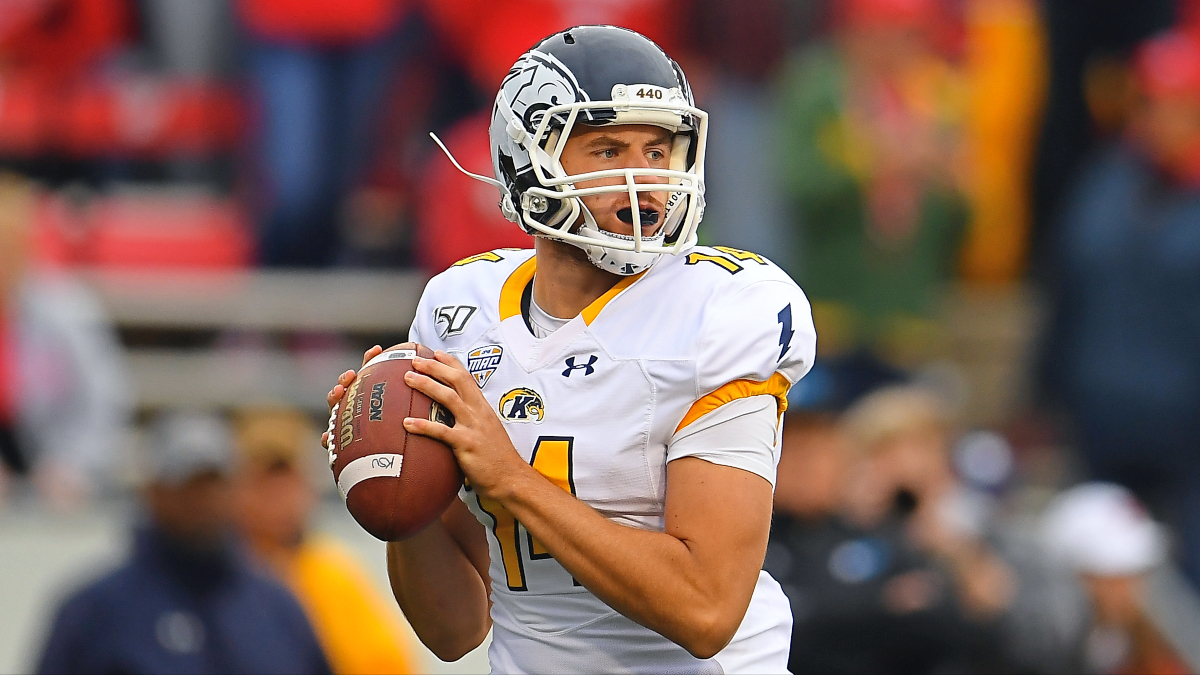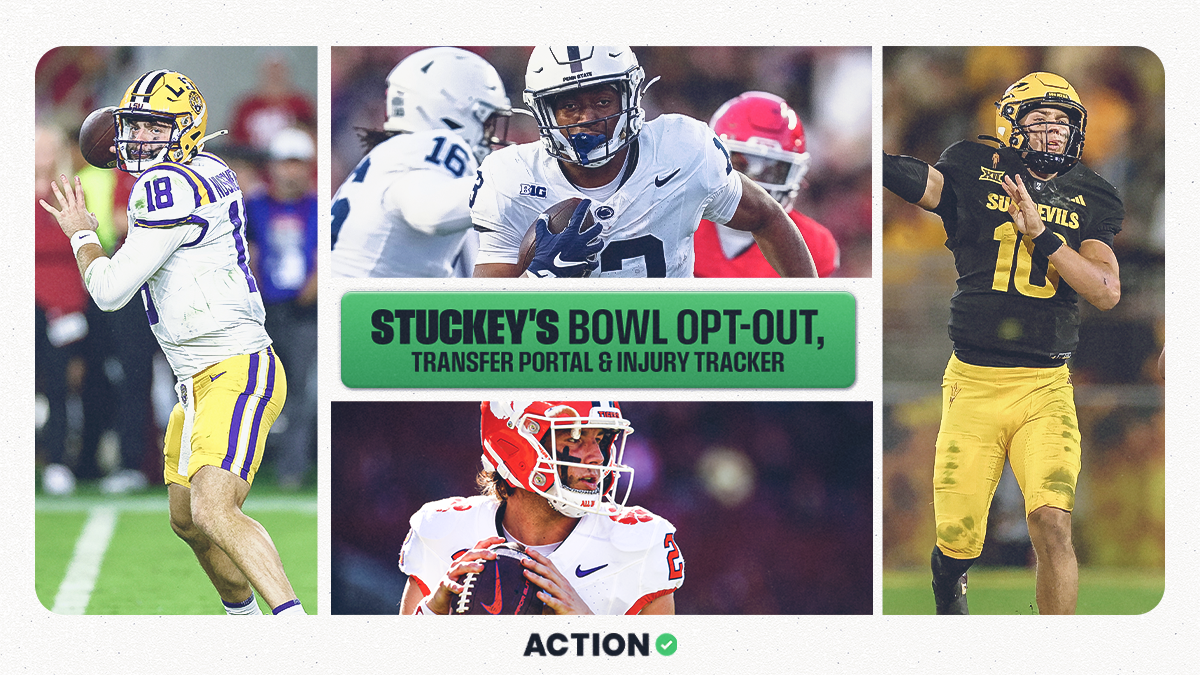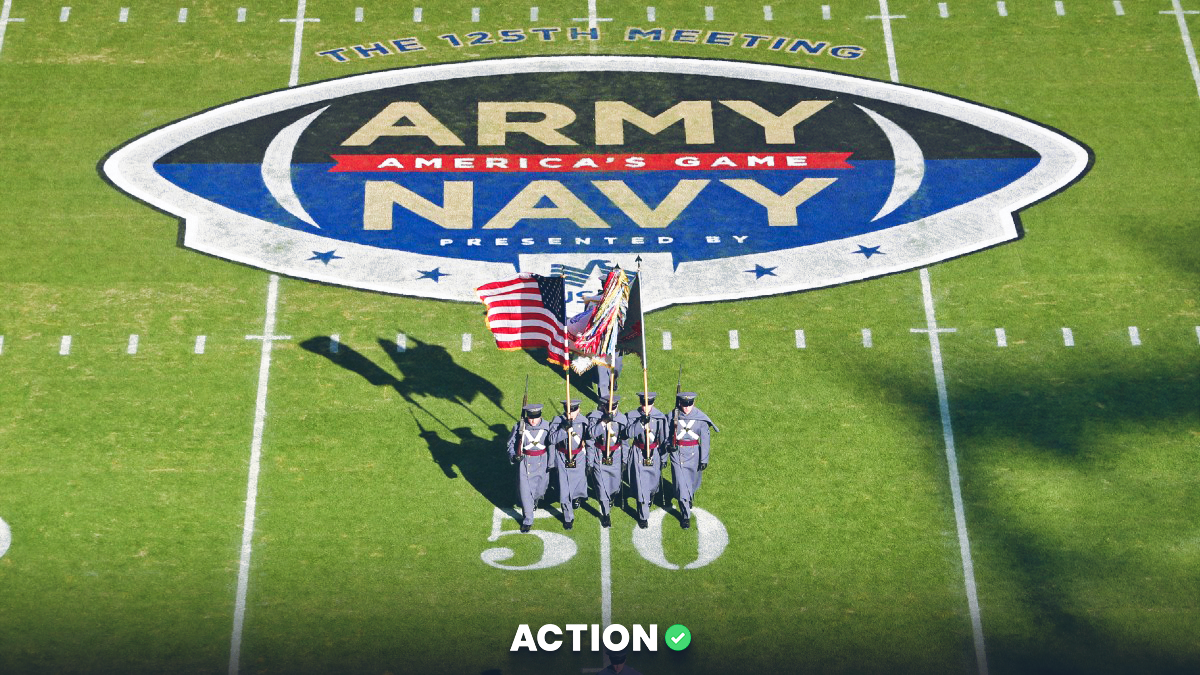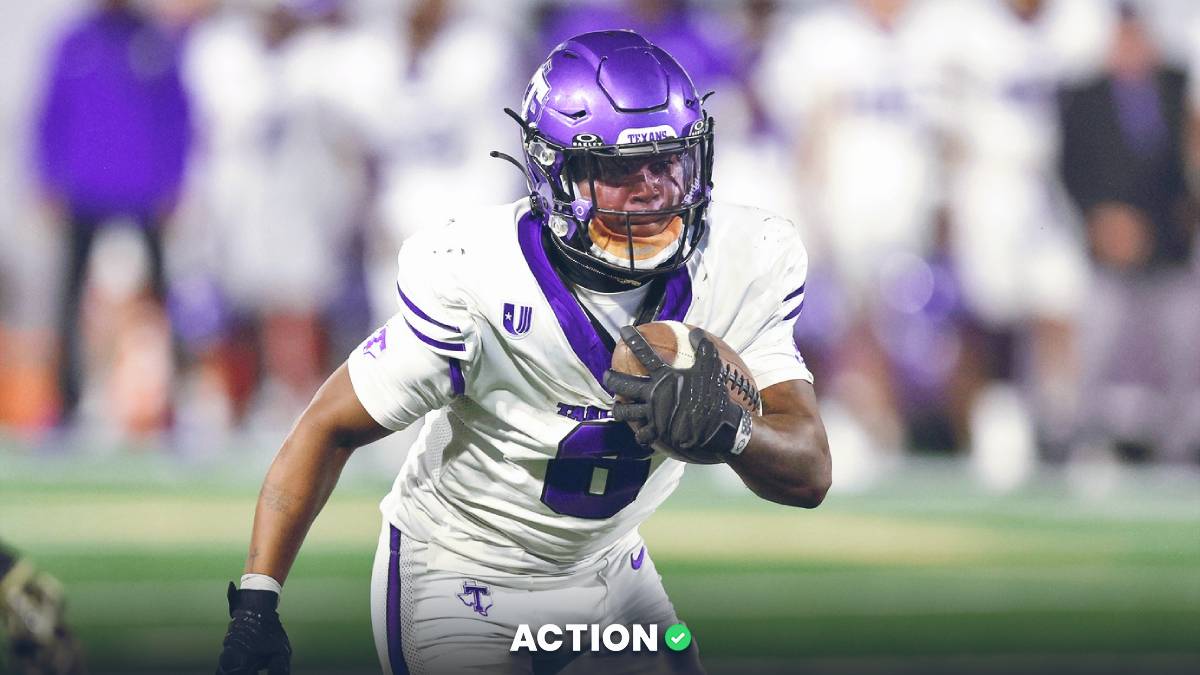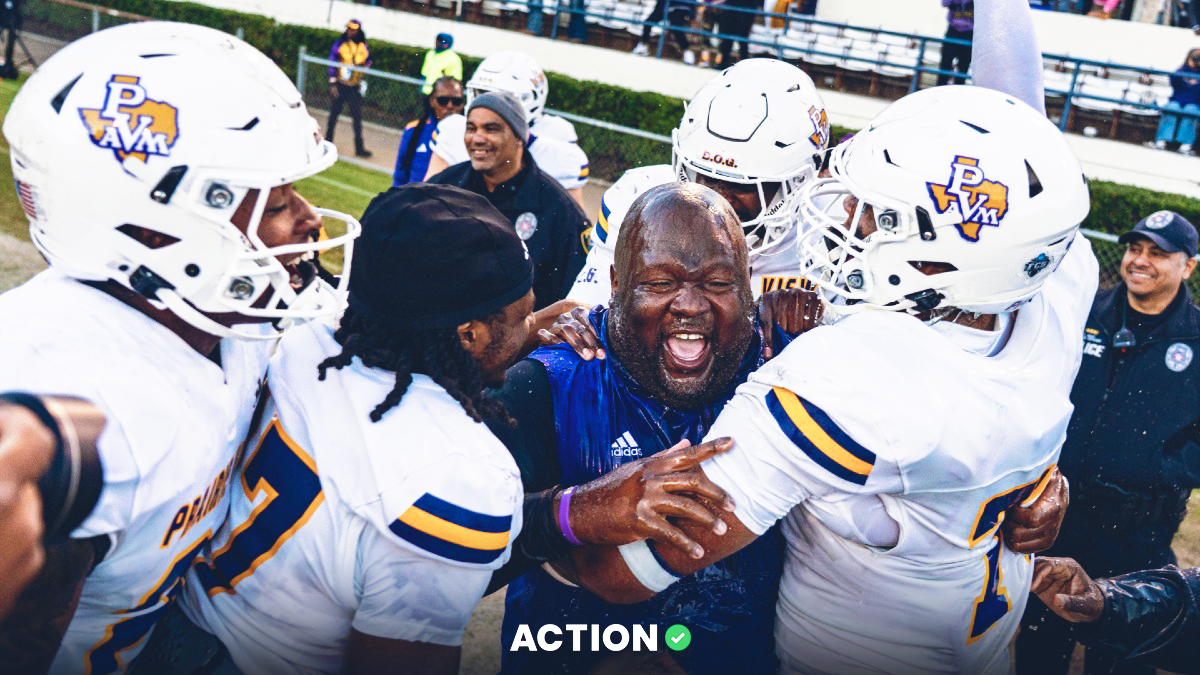- College football statistics have come a long way in the last decade, and you can use them as a part of your handicapping process.
- We dive into the most important stats, how to interpret them, and where to find them.
You've seen us reference them in many of our stories. And you might be a little thrown off by the language and numbers. But don't fret. Advanced stats in college football aren't as complicated as they seem.
Oddsmakers and the betting market already factor pretty much every conceivable statistic into their process. Looking at most publicly available stats in any sport won't give you an automatic edge. But to stay sharp and keep up with them, here are the advanced stats bettors should know.
I can't and won't list every stat, but this should serve as a guide on how to interpret them on your own. Many of these statistics are housed under "Advanced Metrics by Team" at CollegeFootballData.com.
How to Bet on College Football with Advanced Stats
Click the links to jump to a section.
- Same Stats, Different Interpretation
- Rates for Everything
- Rethinking Turnovers & Regression
- The 5 Key Advanced Stats
- Matchup-Based Metrics
- Betting Totals
- Where to Find These Metrics
Some of the "advanced" stats college football bettors use aren't all that advanced. They're just a different interpretation of stats we've been using forever. That's a good place to start.
Same Stats, New Interpretation: YPP vs. YPG
Yards per game (YPG) is influenced by game flow, team philosophy and so much more. Look at yards per play (YPP) on offense and defense instead.
My favorite way to illustrate this is from a 2018 game between Oklahoma and Army.
Oklahoma gained only 355 yards against Army in a 28-21 Sooners overtime win. Doesn't sound all that great, especially for an offense led by eventual Heisman winner Kyler Murray.
But Oklahoma only had the ball eight times and ran just 40 plays because Army controlled the ball with its triple option. That's an indictment of Oklahoma's defense, sure, but not of the offense's ability to move the ball. The Sooners' 8.88 yards per play on offense in that game is an excellent number.
Liberty put up 417 total yards against Army in 60 plays, compared to Oklahoma's 355. Liberty did not have a better offense than Oklahoma in 2018.
Once enough games have been played, use a team's yards per play differential from offense and defense to determine its all-around strength.
The median FBS offense in 2020 (Georgia State) gained 5.66 yards per play, so anything better than that was above average. BYU led FBS at 7.84 yards per play on offense, while Iowa was tops on defense at 4.34 yards per play allowed.
Click to return to table of contents.
Why Not Rates for Everything?
Like yards per play, most college football statistics should be viewed as rates and not raw numbers. The differences in styles can skew raw numbers drastically.
Sack rate, for example: If your defense has four sacks in a game, that's pretty good, right? But if it had four sacks when the other quarterback dropped back to pass 100 times, that's not as good.
Same goes for your offense. Army gave up three sacks last season because it never throws. Hawaii gave up 46, the second most in FBS, because all it does is throw.
Any statistic you look at, consider using the rate, not a raw total.
Click to return to table of contents.
Turnovers & Regression
Turnovers are based on luck, to a certain extent. Over a large sample size, each FBS team will recover about 50% of fumbles. And the FBS average for passes defended that turn into interceptions is just over 20%.
But how an oblong ball bounces after a fumble, or where it flies after a tipped pass, is random on a given play or in a given game.
Because football teams only play 12 games per year, a team can get really lucky or unlucky in this regard in a single season, which can lead to 2-3 fewer wins. The next year, they could play at the exact same level but get some better turnover luck and win 2-3 more games.
How havoc influences turnovers: Havoc is defined as plays in which a defense records a tackle for loss, forces a fumble or defends a pass. Our Collin Wilson loves betting on teams that create havoc, and there are certain defensive coordinators who coach it best. If you're constantly causing havoc, you'll force more turnovers.
But don't blindly look at turnovers in a small sample size and assume it was a product of that team's coaching or ability. If a team has an unusually positive turnover margin one year, it will often come crashing down the next year.
Close-game regression: We tend to overrate a player or coach's ability to win close games. There's lots of luck baked in.
Teams with 5-0 records in one-possession games tend to come back down to earth the following year. Not because they're any worse, but because they got a little unluckier. Teams that struggled in close games usually regress the following year.
Click to return to table of contents.
Key Advanced Stats for Betting College Football
OK, now to the actual stats.
Connelly and Football Outsiders boiled down the success of a football team into five factors.
- Efficiency (Success Rate)
- Explosiveness (IsoPPP)
- Field Position
- Finishing Drives (Points Per Trip Inside the 40)
- Turnovers
These factors come together to make S&P+, which rates FBS teams from 1-130 based on play-by-play performance and not wins and losses. The S&P+ numbers are usually very close to point spreads.
Success Rate (efficiency): Created by Football Outsiders, it's defined as gaining 50% of necessary yardage on first down, 70% on second down and 100% on third and fourth down.
Essentially, how often do you put yourself in a good position to move the chains? Success Rate has the highest correlation to winning games.
Explosiveness: Coaches talk about it all the time now. If you can move the ball in large chunks, and prevent your opponent from doing so, you're going to win a lot of games.
The best explosiveness measure is IsoPPP+ because it's relative to field position. A 35-yard touchdown pass is incredibly valuable because it covers all the yards remaining to score. There was no way that team could have gained more than 35 yards on that play, even if the ballcarrier was 15 yards clear of the closest defender.
CFBStats.com also has raw big play numbers, like total plays of 10-plus yards, all the way to 90-plus yards.
Points per trip inside the 40 (finishing drives): The "red zone" being defined at the 20-yard line is kind of arbitrary. The 40-yard line is a better measure, because it's when a team could conceivably score points via a field goal or eventually a touchdown.
Just look at the points a team expects to score on 1st-and-10, by yard line. It really starts to get serious once you get to your opponent's 40.
Field Position: Special teams is obviously a huge part of this, but the offenses and defenses feed off each other here. Alabama's offense always has good field position because the defense never lets its opponents move the ball downfield. Ohio State's offense is so efficient and rarely goes 3-and-out that the defense is often in favorable situations.
Click to return to table of contents.
EPA, a Catch-All
There's a great catch-all for players and teams at both the play and game level — expected points added. The difference between the Expected Points (EP) at the start of a play and the EP at the end of they play.
Mac Jones completing a 32-yard pass to the Ohio State 43-yard line in last year's national title game gave the Tide about 2.7 points. It makes sense on the surface because Alabama got near field-goal range.
Matchup-Based Metrics
I can't list them all because there are too many. But you can use certain advanced statistics to find matchups where one team excels and one team struggles and make a bet in part based on that. You can find all of this data under "Advanced Metrics by Team" at CollegeFootballData.com.
Opportunity Rate vs. Stuff Rate: Opportunity rate is the percentage of carries that the running back gains five yards. Gaining those first five yards are thought to be a product of offensive line play. Stuff rate is how often a defense tackles a player at or behind the line of scrimmage.
So if you have an offensive line that ranks low in opportunity rate and a defense that's great in stuff rate, you have a mismatch in favor of the defense.
Explosiveness vs. Explosiveness: An offense that makes big plays against a defense susceptible to them.
Adjusted Sack Rate vs. Adjusted Sack Rate: Offensive line stats aren't perfect, but this is a good way to find a defensive line that might dominate.
Click to return to table of contents.
What About Over/Unders?
I'm a big fan of betting unders in college football. You just need to recondition yourself to love great punts, three consecutive running plays that go for 11 yards and turnovers in the red zone, and you will too.
There are ways to find value on overs and unders using pace metrics.
Plays per minute: How quickly are teams getting to the line to snap the ball? More plays and more possessions mean more points. CFBAnalytics has some other good tempo measures, like possessions per game and plays per possession.
The trouble is that the market is already factoring in these pace numbers, so you need to spot opportunities where you think a team might change its normal pace. Either before the season with new coaches/scheme or for a specific game.
Adjusted Pace: How fast a team plays, adjusted for how often it runs or passes. Naturally, if you throw a lot, you'll run more plays since the clock stops on incompletions.
Standard Down run rate: How often a team runs the ball when you'd expect them to. When betting unders, I like teams that run the ball. It keeps the clock moving.
Conversely, there are certain defenses that teams like to pass against on first down. Teams never ran on Michigan State on standard downs (130 of 130 FBS teams) last season. Teams love to run against Bowling Green, however (second of 130).
Click to return to table of contents.
In Conclusion …
College football advanced stats aren't as far along as the NFL's. And nowhere near MLB.
But there's a wealth of information out there for bettors to use, and I encourage you to take advantage by learning more.
Where to Find Advanced Stats
CollegeFootballData.com is a great resource for everything from basic stats to advanced metrics like Expected Points and success rate.
They've also got play-by-play data if you're interested in doing your own analysis in Excel, R or elsewhere.
SBNation's FootballStudyHall.com
Bill Connelly — formerly of SB Nation and now at ESPN — is the gatekeeper for a lot of college football's best advanced metrics. A lot of his work there is still applicable.
A good visual resource with advanced stats, power ratings, and some custom metrics like Pass Rate Over Expected.
FO pioneered many advanced NFL metrics, and did the same for college. A lot of their college stats aren't available until Week 6.
I feel bad excluding so many other independent voices on Twitter and elsewhere who do wonderful college football analysis, but one guy I like in particular is Adam McClintock. He does a lot of work grading coordinators and playcallers, which is pretty unique to what else is publicly available. Some of that data he puts out on Twitter, and other stuff is on his Patreon, which you can get for $2 a month.
Click to return to table of contents.


